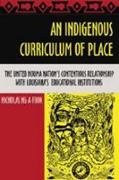Read more
The longest desegregation lawsuit in American history, involving Louisiana's political, judicial and educational institutions, was recently settled. Like many African-American communities in the south, members of the United Houma Nation did not have access to "White" systems of public education, or to African-American schools, until the mid-1960s. This book illustrates how the Louisiana state apparatus historically dictated educational exclusion through its infamous Jim Crow policies of racial segregation. Utilizing a combination of ethnography, historiography, and oral history methods, its research narratives are specifically concerned with the life histories of United Houma Nation elders who experienced firsthand the complexities and difficulties of institutional racism.
An Indigenous Curriculum of Place is essential reading for curriculum scholars, teachers, and community leaders. The narratives in this book not only have the potential to teach us about alternative ways of knowing, but also to understand the limits of our colonized worldviews.
List of contents
List of Figures - Preface - Acknowledgments - Introduction: A Marsh Made of Dawn - Deconstructing a Literature of Dominance - Houma Oral Histories - A Houma Curriculum Outside the School - Surviving Louisiana's Educational Institutions - An Indigenous Curriculum of Place - Epilogue - Appendix A Road Map of Louisiana - Appendix B Map of Louisiana Parishes - Appendix C Map of Lafourche Parish - Appendix D Map of Plaquemines Parish - Appendix E A United Houma Nation Historical Timeline - Appendix F List of Formal Interviews - References - Index.

